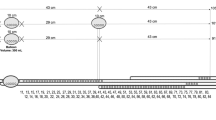Abstract
Anismus, or failure of the somatic sphincter apparatus to relax at defecation, has been implicated as a major contributor to the problem of obstructed defecation. Current diagnostic methods depend on laboratory measurements of attempted defecation and the most complex, dynamic proctography has been the mainstay of diagnosis. Using a new computerized ambulatory method of recording sphincter function in these patients at home, we report an 80% reduction in our diagnostic rate suggesting that conventional tests fail to accurately diagnose this condition, probably because they poorly represent the natural physiology of defecation. Treatment of this distressing condition is more complex and a variety of surgical and pharmacological measures have failed. Biofeedback retraining of anorectal function of these patients has been very successful and represents the management of choice.
Résumé
L'anisme, ou impossibilité de relaxation de l'appareil sphincterien de l'anus lors de la défecation, a été impliqué comme facteur majeur dans le problème de constipation. Les méthodes actuelles de diagnostic de l'anisme dépendent des examens de laboratoire; la proctographie dynamique, l'examen le plus complexe, a été, jusqu'à présent, l'examen le plus probant. Avec l'utilisation d'un enregistrement informatisé ambulatoire, nous avons constaté une réduction de 80% dans notre taux de diagnostic, ce qui suggère que les examens conventionels ne font pas de diagnostic correct, probablement parce qu'ils ne tiennent pas bien compte de la physiologie naturelle de la défecation. Le traitement de cette entité inquiètante est complexe et beaucoup des méthodes chirurgicales ou pharmacologiques sont des échecs. Par contre, le biofeedback et l'entrainement anorectal sont souvent couronnés de succès et représentent la méthode therapeutique de choix.
Resumen
El anismus, o sea la falla en el fenómeno de relajación del aparato somático esfinteriano que permite la defecación, ha sido implicado como el factor principal en el problema de la defecación obstruida. Los actuales métodos de diagnóstico, que dependen de mediciones fisiológicas de laboratorio durante el intento de defecación y de la muy compleja proctografía dinámica, han venido a ser esenciales para el diagnóstico. Con la utilización de un novedoso método computadorizado ambulatorio de registro de la función esfinteriana con el paciente en el hogar, podemos informar una reducción de 80% en nuestra tasa de diagnóstico de anismo, lo cual sugiere que las pruebas convencionales fallan en el diagnóstico certero de esta condición, probablemente porque representan de manera muy pobre la fisiología natural de la defecación. El tratamiento de esta incapacitante condición es más complejo y toda una variedad de procedimientos quirúrgicos y farmacológicos han fallado. En estos pacientes el reentrenamiento de la función ano-rectal por biorectroalimentación ha sido muy exitoso y representa la modalidad de manejo preferencial.
Similar content being viewed by others
References
Preston, D.M., Lennard-Jones, J.E.: Anismus in chronic constipation. Dig. Dis. Sci.30:413, 1985
Kuijpers, H.C., Bleijenberg, G.: The spastic pelvic floor syndrome: A cause of constipation. Dis. Colon Rectum28:669, 1985
Jones, P.N., Lubowski, D.Z., Swash, M., Henry, M.M.: Is paradoxical contraction of puborectalis of functional importance. Dis. Colon Rectum30:667, 1987
Wasserman, I.F.: Puborectalis syndrome (Rectal stenosis due to anorectal spasm). Dis. Colon Rectum7:87, 1964
Barnes, P.R.H., Lennard-Jones, J.E.: Function of the striated anal sphincter during straining in control subjects and constipated patients with a radiologically normal rectum or idiopathic megacolon. Int. J. Color. Dis.3:207, 1988
Binnie, N.R., Kawimbe, B.M., Papacrysostomou, M., Clare, N., Smith, A.N.: The importance of the orientation of the electrode plates in recording the external anal sphincter EMG by noninvasive anal plug electrodes. Int. J. Color. Dis.6:5, 1991
Barnes, P.R.H., Lennard-Jones, J.E.: Balloon expulsion from the rectum in constipation of different types. Gut26:1049, 1985
Womack, N.R., Williams, N.S., Holmfield, J.H.M., Morrison, J.F.B., Simpkins, K.C.: New method for the dynamic assessment of anorectal function in constipation. Br. J. Surg.72:994, 1985
Roe, A.M., Bartolo, D.C.C., Mortensen, N.J.M.: Slow transit constipation: Comparison between patients with or without previous hysterectomy. Dig. Dis. Sci.33:1159, 1988
Duthie, G.S., Bartolo, D.C.C., Miller, R., Mortensen, N.J.M.: Is anismus the result of reduced anorectal sensation in slow transit constipation. Gut30:A714, 1989
Miller, R., Duthie, G.S., Bartolo, D.C.C., Roe, A.M., Mortensen, N.J.M., Locke-Edmunds, J.C.: The role of anismus in patients with normal and slow transit constipation. Br. J. Surg. (in press)
Ambroze, W.I., Pemberton, J.H., Litchy, W.J., Hanson, R.B.: The myoelectric activity of the pubococcygeus muscle. Dis. Colon Rectum33:P29, 1990
Roberts, J.P., Thorpe, A.C., Williams, N.S.: The assessment of defective rectal evacuation by dynamic integrated proctography. Br. J. Surg. (in press)
Duthie, G.S., Bartolo, D.C.C., Miller, R.: Laboratory tests grossly overestimate the incidence of anismus. Br. J. Surg. (in press)
Yoshioka, K., Keighley, M.R.B.: Anorectal myectomy for outlet obstruction. Br. J. Surg.74:373, 1987
Yoshioka, K., Keighley, M.R.B.: Randomised trial comparing anorectal myectomy and controlled anal dilatation for outlet obstruction. Br. J. Surg.74:1125, 1987
Pinho, M., Yoshioka, K., Keighley, M.R.B.: Long term results of anorectal myectomy for chronic constipation. Br. J. Surg.76:1163, 1989
Clough Wallace, W., Madden, W.M.: Partial Puborectalis resection: A new surgical technique for anorectal dysfunctionction. South. Med. J.62:1123, 1969
Barnes, P.R.H., Hawley, P.R., Preston, D.M., Lennard-Jones, J.E.: Experience of posterior division of the puborectalis muscle in the management of chronic constipation. Br. J. Surg.72:475, 1985
Kamm, M.A., Hawley, P.R., Lennard-Jones, J.E.: Lateral division of the puborectalis muscle in the management of severe constipation. Br. J. Surg.75:661, 1988
Duthie, G.S., Bartolo, D.C.C., Miller, R., Mortensen, N.J.M.: Anismus does not adversely affect the outcome of colectomy and ileorectal anastomosis for slow transit constipation. Gut30:A735, 1989
Binnie, N.R., Kawimbe, B.M., Papachrysostomou, M., Smith, A.N.: EMG biofeedback as a domiciliary treatment of anismus. Gut30:A714, 1989
Bleijenberg, G., Kuijpers, H.C.: Treatment of the spastic pelvic floor syndrome by biofeedback. Dis. Colon Rectum30:108, 1987
Keren, S., Wagner, Y., Heldenberg, D., Golan, M.: Studies of manometric abnormalities of the rectoanal region during defaecation in constipated and soiling children: Modification through biofeedback therapy. Am. J. Gastroenterol.83:827, 1988
Author information
Authors and Affiliations
Rights and permissions
About this article
Cite this article
Duthie, G.S., Bartolo, D.C.C. Anismus: The cause of constipation? Results of investigation and treatment. World J. Surg. 16, 831–835 (1992). https://doi.org/10.1007/BF02066978
Issue Date:
DOI: https://doi.org/10.1007/BF02066978




